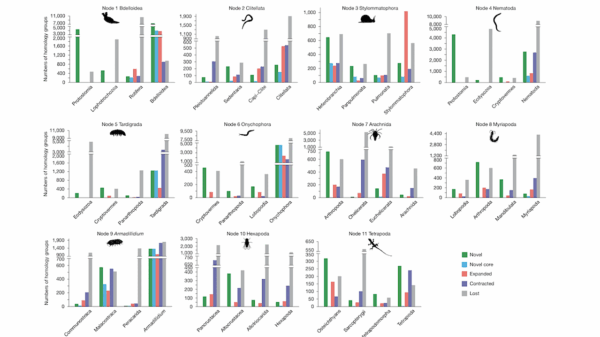The Fast Fourier Transform (FFT) algorithm, a groundbreaking advancement in computer science and mathematics, is being honored for its enduring influence on data processing and analysis. Developed by Cooley and Tukey in the 1960s, the FFT has significantly impacted various industries, including telecommunications, medical imaging, and audio processing. As we enter a new phase in computing, it is essential to recognize the FFT’s vital role in the evolution of quantum computing, particularly through the innovative work of IBM.
The Impact of FFT on Data Processing
The FFT algorithm transformed the landscape of data manipulation by reducing the computational complexity of the discrete Fourier transform from O(N²) to O(N log N). This efficiency enabled faster signal processing and allowed for the analysis of large datasets, which was previously unfeasible. The algorithm is regarded as a cornerstone of modern computing, showcasing how mathematical insights can lead to technological advancements.
As industries continue to harness the power of FFT, its legacy is evident in numerous applications, from enhancing audio quality to improving image clarity in medical imaging technologies.
Quantum Computing: The Next Frontier
In parallel with celebrating the FFT, it is crucial to explore the transformative potential of quantum computing. Unlike classical computers, which utilize bits, quantum computers rely on qubits, allowing them to execute complex calculations at unprecedented speeds. This technology promises to resolve challenges beyond the capabilities of traditional systems, such as optimization problems and large-scale machine learning tasks.
IBM has positioned itself as a leader in the quantum computing domain, focusing on developing scalable quantum systems. Their commitment not only aims to enhance technological capabilities but also strives to redefine entire industries and scientific exploration.
The intersection of FFT and quantum computing is particularly noteworthy. Quantum algorithms often require efficient data analysis, which is where the FFT can contribute significantly. The Quantum Fourier Transform (QFT), a quantum adaptation of the FFT, has demonstrated potential for exponential speed improvements in computations. The QFT is essential to several quantum algorithms, including Shor’s algorithm, which has significant implications for cryptography.
IBM’s research leverages both FFT principles and their quantum counterparts to accelerate advancements in various fields, including material science and financial modeling. Initiatives like the IBM Quantum Experience grant researchers and developers access to real quantum hardware, fostering collaboration and innovation.
Fostering Education and Collaboration
To maximize the benefits of quantum computing alongside established algorithms like FFT, education and collaboration play critical roles. The IBM Quantum community nurtures an inclusive ecosystem through programs designed to make quantum computing accessible to a wider audience. Initiatives such as the Qiskit open-source framework empower developers and researchers to delve into quantum concepts, create algorithms, and experiment with quantum systems.
This educational approach pays tribute to the legacy of the FFT’s creators by inspiring a new generation of scientists and engineers. As more individuals gain exposure to quantum technology and education, the potential for practical applications grows, influencing how we interact with machines and data.
Honoring the FFT serves not only as a recognition of past achievements but also as a reminder of how foundational ideas can shape the future of technology. As we progress deeper into the quantum computing era, the lessons learned from pioneering algorithms like the FFT will guide our exploration of new possibilities.
Companies such as IBM are leading this journey, enhancing computational capabilities and pushing the limits of what is achievable. With a commitment to ongoing research, education, and collaboration, the potential of quantum technologies can be fully realized, paving the way for innovative breakthroughs in computing.



































































